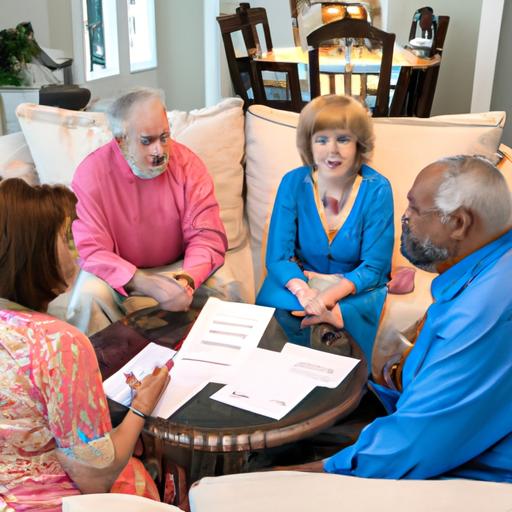Enhancing Healthcare Access: The Vital Role of Interpretation Services in Healthcare
Introduction
In today’s multicultural society, effective communication plays a pivotal role in ensuring optimal healthcare outcomes for all individuals. However, language barriers can present significant challenges, impeding the delivery of quality healthcare services. This is where interpretation services in healthcare step in, bridging the linguistic divide and fostering a comprehensive and inclusive healthcare environment.
A. Importance of interpretation services in healthcare
Imagine finding yourself in a foreign country, unable to understand the language spoken by healthcare professionals. In such a situation, receiving appropriate medical care becomes an arduous task, jeopardizing your health and well-being. This is the reality for millions of individuals who face language barriers in healthcare settings every day.
Interpretation services in healthcare serve as a lifeline, enabling patients and healthcare providers to communicate effectively, regardless of language differences. By ensuring accurate and clear communication, these services enhance patient safety, facilitate proper diagnosis, and enable patients to actively participate in their own healthcare decisions.
B. Definition of interpretation services in healthcare
Interpretation services in healthcare refer to the provision of linguistic support to patients who do not speak the same language as their healthcare provider. It involves the interpretation of spoken language in real-time, ensuring accurate and culturally sensitive communication between patients and healthcare professionals.
These services can be delivered through different modalities, including in-person interpretation, telephone interpretation, and video remote interpretation (VRI). Each modality offers unique advantages and limitations, catering to the diverse needs of patients and healthcare facilities.
In the following sections, we will delve deeper into the benefits, types, challenges, best practices, and the overall impact of interpretation services in healthcare. Together, let’s explore how these services revolutionize healthcare access, empowering individuals to receive the care they deserve, irrespective of language barriers.
Types of Interpretation Services in Healthcare
In the realm of healthcare, interpretation services come in various forms to cater to the unique needs and circumstances of patients and healthcare providers. Let’s explore the different types of interpretation services available:
A. In-person interpretation
In-person interpretation involves the presence of a trained interpreter physically present during the healthcare encounter. These interpreters possess linguistic proficiency and cultural awareness, ensuring accurate and culturally sensitive communication. They serve as a valuable link between patients and healthcare professionals, facilitating effective understanding and collaboration.
Trained interpreters provide numerous advantages, including the ability to accurately convey complex medical terminology, non-verbal cues, and nuanced expressions. However, it’s important to consider the limitations of in-person interpretation, such as the availability of interpreters, potential scheduling conflicts, and the need for physical space within healthcare facilities.
B. Telephone interpretation
Telephone interpretation offers accessibility and convenience, particularly in situations where immediate interpretation is required or in remote areas where in-person interpreters may not be readily available. With the help of a telephone interpreter, healthcare professionals can overcome language barriers and communicate effectively with patients.
This mode of interpretation requires effective communication strategies to compensate for the lack of visual cues. Healthcare providers must ensure clear articulation, active listening, and the use of concise language to facilitate understanding. Additionally, healthcare facilities should consider the availability of reliable telephone interpretation services to ensure seamless communication.
C. Video Remote Interpretation (VRI)
Video Remote Interpretation (VRI) combines the advantages of in-person and telephone interpretation, utilizing technology to bridge language gaps. VRI involves the use of video conferencing platforms to connect healthcare professionals, patients, and interpreters in real-time. This modality allows for visual and audio cues, enhancing the accuracy and comprehensibility of communication.
VRI is particularly useful in scenarios where visual aids, such as sign language or gestures, are essential for effective communication. It enables healthcare providers to assess patients’ non-verbal cues and expressions, ensuring a holistic understanding of their needs. However, it’s crucial to identify suitable scenarios for VRI implementation, considering factors such as internet connectivity, privacy concerns, and the technical proficiency of users.
By embracing these different types of interpretation services, healthcare facilities can break down language barriers and create an inclusive environment that prioritizes effective communication and patient-centered care.
Challenges Faced in Interpretation Services in Healthcare
While interpretation services in healthcare play a crucial role in improving communication and patient care, several challenges need to be addressed to ensure their effective implementation and utilization.
A. Limited availability of qualified interpreters
One of the primary challenges in interpretation services is the scarcity of qualified interpreters. Finding interpreters proficient in both the target language and medical terminology can be a daunting task. This scarcity can lead to longer wait times for interpretation services, hindering timely healthcare delivery.
To overcome this challenge, healthcare facilities can invest in training programs to enhance the pool of qualified interpreters. Collaborating with professional interpretation services or establishing partnerships with language service agencies can also help ensure a consistent supply of skilled interpreters.
B. Cost considerations
Implementing interpretation services in healthcare can involve financial considerations. Allocating resources to hire interpreters, provide training, or invest in language translation technology can strain healthcare budgets, particularly for smaller facilities or those with limited resources.
Finding a balance between cost and the need for effective communication is crucial. Healthcare facilities can explore cost-effective solutions such as leveraging technology, such as language translation apps or video remote interpretation (VRI), which can provide quality interpretation services at a fraction of the cost.
C. Ensuring patient privacy and confidentiality
Privacy and confidentiality are paramount in healthcare settings. When utilizing interpretation services, healthcare providers must ensure that patient information remains secure and confidential. This requires adherence to strict privacy policies and the use of secure communication channels.
Healthcare facilities should establish protocols and guidelines to protect patient privacy during interpretation sessions. Implementing secure telecommunication platforms, training interpreters on confidentiality standards, and obtaining signed confidentiality agreements can help mitigate privacy concerns.
By addressing these challenges head-on, healthcare facilities can maximize the benefits of interpretation services while ensuring patient satisfaction, safety, and access to quality healthcare.
Best Practices for Implementing Interpretation Services in Healthcare
To ensure the seamless integration of interpretation services in healthcare, healthcare facilities should adopt best practices that optimize communication and promote cultural sensitivity. By implementing these practices, healthcare providers can enhance patient experiences and outcomes, fostering a healthcare environment that values diversity and inclusivity.
A. Training healthcare staff
-
Effective communication techniques: Healthcare staff should receive training on how to effectively communicate through interpretation services. This includes learning to speak clearly, using simple language, and being mindful of non-verbal cues to ensure accurate interpretation.
-
Awareness of cultural differences: Cultural competency training is essential to help healthcare providers understand and respect diverse cultural backgrounds. This training enables providers to navigate cultural nuances, beliefs, and customs, fostering trust and rapport with patients.
B. Utilizing technology
-
Language translation apps: Healthcare facilities can leverage language translation apps to facilitate basic communication between healthcare professionals and patients. These apps can provide immediate translations of commonly used medical terms, phrases, and instructions, enabling quick and accurate exchange of information.
-
Interpreter scheduling software: Implementing interpreter scheduling software streamlines the process of arranging interpretation services. This software allows healthcare facilities to efficiently schedule interpreters based on language proficiency, availability, and specific healthcare needs, ensuring timely access to interpretation services.
C. Collaboration with professional interpretation services
-
Establishing partnerships: Healthcare facilities can form partnerships with professional interpretation services, such as language agencies or interpreter networks. These partnerships ensure access to qualified interpreters who possess the necessary language skills and cultural competency to effectively assist patients.
-
Quality assurance measures: Collaborating with professional interpretation services allows healthcare facilities to establish quality assurance measures. This includes monitoring interpreter performance, conducting regular evaluations, and providing feedback to ensure the provision of accurate and reliable interpretation services.
By incorporating these best practices, healthcare facilities can create a language-accessible environment, empowering patients to receive equitable and high-quality care, regardless of language barriers.
Conclusion
In conclusion, interpretation services in healthcare play a vital role in breaking down language barriers and fostering effective communication between patients and healthcare providers. By ensuring accurate and culturally sensitive communication, these services enhance patient understanding, facilitate proper diagnosis, and improve overall patient care.
The benefits of interpretation services extend beyond improved communication. They also promote cultural sensitivity, respecting the diverse backgrounds and beliefs of patients. This, in turn, reduces misunderstandings and conflicts, creating a harmonious healthcare environment where patients feel valued and understood.
To fully harness the potential of interpretation services in healthcare, it is crucial for healthcare facilities to prioritize language access. By training healthcare staff, utilizing technology, and collaborating with professional interpretation services, healthcare providers can ensure that every patient receives the care they deserve, regardless of language barriers.
As we continue to embrace diversity in healthcare, let us remember that effective communication is the cornerstone of providing equitable and quality care. Together, let us champion interpretation services in healthcare to enhance healthcare access and improve patient outcomes and satisfaction.
Remember, interpretation services in healthcare are not just about bridging language gaps – they are about creating a compassionate and inclusive healthcare environment where everyone’s voice is heard and understood. Let us work together to break down language barriers and ensure that language is never a barrier to quality healthcare.






